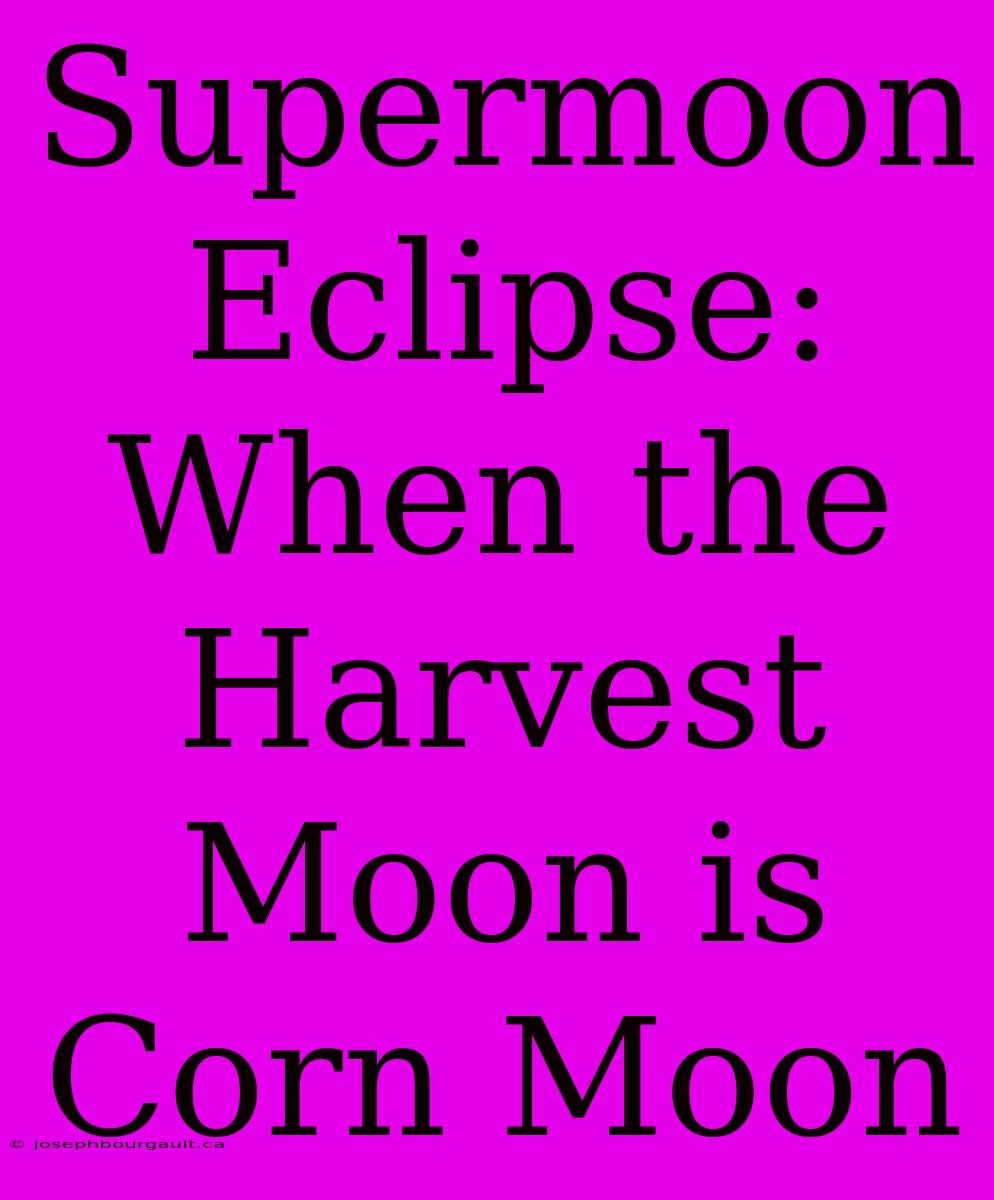Supermoon Eclipse: When the Harvest Moon is Corn Moon
The night sky is about to put on a spectacular show, as a rare celestial event aligns: a Supermoon Eclipse. This dazzling display happens when a full moon is at its closest point to Earth, appearing larger and brighter than usual, and also coincides with a lunar eclipse. This year, this phenomenon takes on an extra special significance because it occurs during the Harvest Moon, also known as the Corn Moon.
What is a Supermoon Eclipse?
A Supermoon Eclipse occurs when three astronomical events happen simultaneously:
-
Supermoon: The moon's orbit around Earth is not perfectly circular, but slightly elliptical. When the moon is at its closest point to Earth, it's called perigee. A full moon at perigee is called a supermoon and appears about 14% larger and 30% brighter than a regular full moon.
-
Full Moon: This happens when the sun, Earth, and moon are aligned, with the Earth in the middle. This alignment causes the entire face of the moon to be illuminated by the sun.
-
Lunar Eclipse: This occurs when the Earth passes directly between the sun and the moon, casting a shadow on the moon. When the Earth's shadow completely covers the moon, it's called a total lunar eclipse, which gives the moon a reddish hue.
Why is this Supermoon Eclipse Special?
This particular Supermoon Eclipse is even more special because it coincides with the Harvest Moon.
Harvest Moon: Traditionally, this is the full moon that falls closest to the autumnal equinox. It's named for the fact that it provides extra light for farmers to harvest their crops. In some years, it can even coincide with another traditional name for the full moon in September, the Corn Moon, which represents the ripening of corn.
Witnessing the Supermoon Eclipse
This celestial event is a sight to behold, so be sure to mark your calendars. You won't want to miss this rare opportunity to witness the beautiful interplay of light and shadow.
Here are some tips for viewing the Supermoon Eclipse:
- Find a dark location: Light pollution from cities can make it difficult to see the eclipse. Look for a spot with minimal artificial lighting.
- Look to the east: The moon will appear in the eastern sky as night falls.
- Be patient: The eclipse may take a while to reach totality, so be patient and enjoy the show!
Remember:
- No special equipment is needed to view a lunar eclipse. Your eyes are all you need!
- You can safely look at the moon during a lunar eclipse. Unlike solar eclipses, it's not harmful to look directly at the moon.
Enjoy the show!

